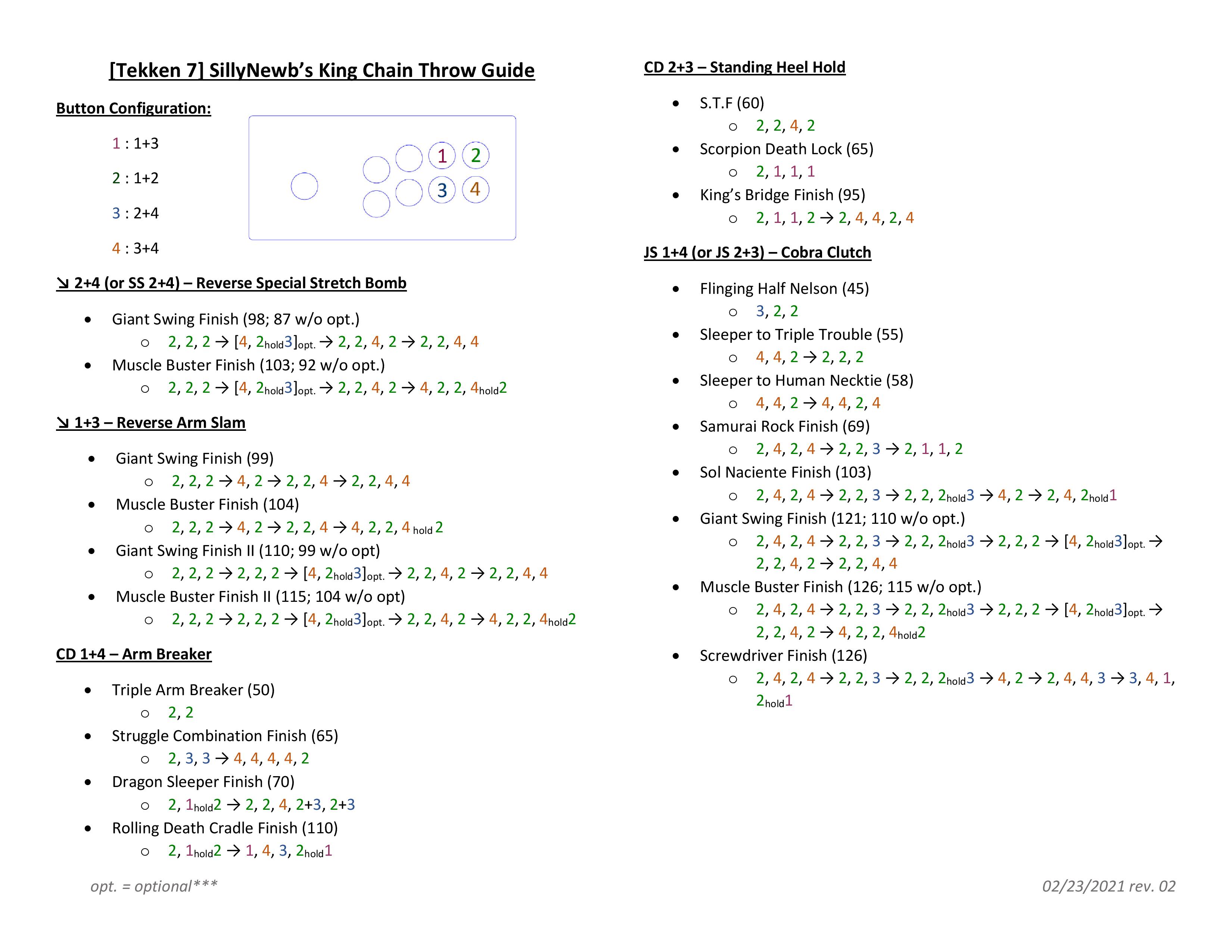

However, x = 0 x = 0 is also a point of interest. The absolute maximum value of the function occurs at the higher peak, at x = 2. The graph can be described as two mountains with a valley in the middle. Local Extrema and Critical PointsĬonsider the function f f shown in Figure 4.14. This idea is useful in determining where absolute extrema occur.

TEKKEN 1 2 3 4 HOW TO
These two graphs illustrate why a function over a bounded interval may fail to have an absolute maximum and/or absolute minimum.īefore looking at how to find absolute extrema, let’s examine the related concept of local extrema. The function has an absolute minimum over [ 0, 2 ), [ 0, 2 ), but does not have an absolute maximum over [ 0, 2 ). The function in graph (f) is continuous over the half-open interval [ 0, 2 ), [ 0, 2 ), but is not defined at x = 2, x = 2, and therefore is not continuous over a closed, bounded interval. The function has an absolute maximum over but does not have an absolute minimum. Although the function in graph (d) is defined over the closed interval, , the function is discontinuous at x = 2. The extreme value theorem cannot be applied to the functions in graphs (d) and (f) because neither of these functions is continuous over a closed, bounded interval. However, the function in graph (e) is the only one that has both an absolute maximum and an absolute minimum over its domain. All three of these functions are defined over bounded intervals. For example, consider the functions shown in Figure 4.13(d), (e), and (f). If the interval I I is open or the function has even one point of discontinuity, the function may not have an absolute maximum or absolute minimum over I. For the extreme value theorem to apply, the function must be continuous over a closed, bounded interval. There are a couple of key points to note about the statement of this theorem. Typically, it is proved in a course on real analysis. The proof of the extreme value theorem is beyond the scope of this text.

If f f is a continuous function over the closed, bounded interval, , then there is a point in at which f f has an absolute maximum over and there is a point in at which f f has an absolute minimum over. We say that f ( x ) = x 2 + 1 f ( x ) = x 2 + 1 does not have an absolute maximum (see the following figure). We say that 1 is the absolute minimum of f ( x ) = x 2 + 1 f ( x ) = x 2 + 1 and it occurs at x = 0. However, since x 2 + 1 ≥ 1 x 2 + 1 ≥ 1 for all real numbers x x and x 2 + 1 = 1 x 2 + 1 = 1 when x = 0, x = 0, the function has a smallest value, 1, when x = 0. Therefore, the function does not have a largest value.

Absolute ExtremaĬonsider the function f ( x ) = x 2 + 1 f ( x ) = x 2 + 1 over the interval ( − ∞, ∞ ). In this section, we look at how to use derivatives to find the largest and smallest values for a function. Finding the maximum and minimum values of a function also has practical significance because we can use this method to solve optimization problems, such as maximizing profit, minimizing the amount of material used in manufacturing an aluminum can, or finding the maximum height a rocket can reach. This information is important in creating accurate graphs. Given a particular function, we are often interested in determining the largest and smallest values of the function.


 0 kommentar(er)
0 kommentar(er)
